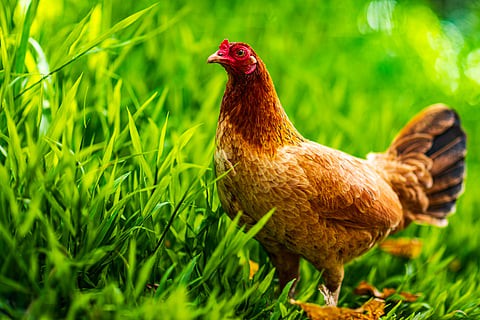




Source: TIMESOFINDIA
Disclaimer: Copyright infringement not intended
New York State Departments of Agriculture and Market and Environmental Conservation, in coordination with the State Department of Health, confirmed a case of Chronic Wasting Disease.
Aspect |
Details |
|
Definition |
Chronic wasting disease, sometimes called zombie deer disease, is a transmissible spongiform encephalopathy affecting deer. It is a prion disease that affects deer, elk, moose, and other members of the cervid family. It is a fatal neurological disease with no known cure. |
|
First Identified |
CWD was first identified in a captive deer facility in Colorado, USA (1960s) and recognized as a prion disease in 1980. |
|
Cause |
Caused by misfolded proteins called prions that trigger normal brain proteins to misfold, leading to brain damage and ultimately death. |
|
Transmission |
Prions are transmitted through direct contact with infected animals or indirectly through contaminated environments (e.g., soil, water). |
|
Symptoms |
Includes drastic weight loss, lack of coordination, drooling, excessive thirst and urination, listlessness, and behavioral changes like loss of fear of humans. |
|
Affected Species |
Currently, there is no evidence of it infecting livestock or humans. |
|
Geographic Spread |
North America, also reported in parts of South Korea and Scandinavia. |
|
Diagnosis |
CWD is diagnosed post-mortem. |
|
Impact on Population |
Can lead to population declines in affected species, disrupts ecosystems, and poses a threat to hunting economies reliant on healthy wildlife populations. |
|
Human Health Concerns |
Some experts caution against consuming infected meat due to the similarity to other prion diseases, such as Creutzfeldt-Jakob disease. |
|
Prevention |
Measures include containment and monitoring of wild and captive deer populations, avoiding transportation of infected animals, & educating hunters about safe handling & testing of meat. |
|
Treatment |
Currently, there is no cure or vaccine for CWD. |
Cervidae is a family of hoofed ruminant mammals in the order Artiodactyla. A member of this family is called a deer or a cervid. They are widespread throughout North and South America, Europe, and Asia, and are found in a wide variety of biomes. One species, Père David's deer, is extinct in the wild, and one, Schomburgk's deer, went extinct in 1938.
|
Ruminants are herbivorous grazing or browsing placental mammals belonging to the suborder Ruminantia that are able to acquire nutrients from plant-based food by fermenting it in a specialized stomach prior to digestion, principally through microbial actions. |
Cervidae is divided into subfamilies Cervinae (which includes, among others, muntjac, elk (wapiti), red deer, and fallow deer) and Capreolinae (which includes, among others reindeer (caribou), white-tailed deer, roe deer, and moose).
Sources:
|
PRACTICE QUESTION Q:Consider the following statements in reference to deers: 1. Africa has only one native deer species. 2. Deer constitute the most diverse family of artiodactyla. Select the incorrect statements using the codes given below: a) 1 only b) 2 only c) Both 1 and 2 d) Neither 1 nor 2 Answer: b Explanation: Statement 1 is correct: Deer are widely distributed, with indigenous representatives in all continents except Antarctica and Australia, though Africa has only one native deer, the Barbary stag, a subspecies of red deer that is confined to the Atlas Mountains. Statement 2 is incorrect: Deer constitute the second most diverse family of artiodactyla after bovids. Artiodactyl is any member of the mammalian order Artiodactyla, or even-toed ungulates, which includes pigs, peccaries, hippopotamuses, camels, chevrotains, deer, giraffes, pronghorn, antelopes, sheep, goats, and cattle. |






© 2025 iasgyan. All right reserved